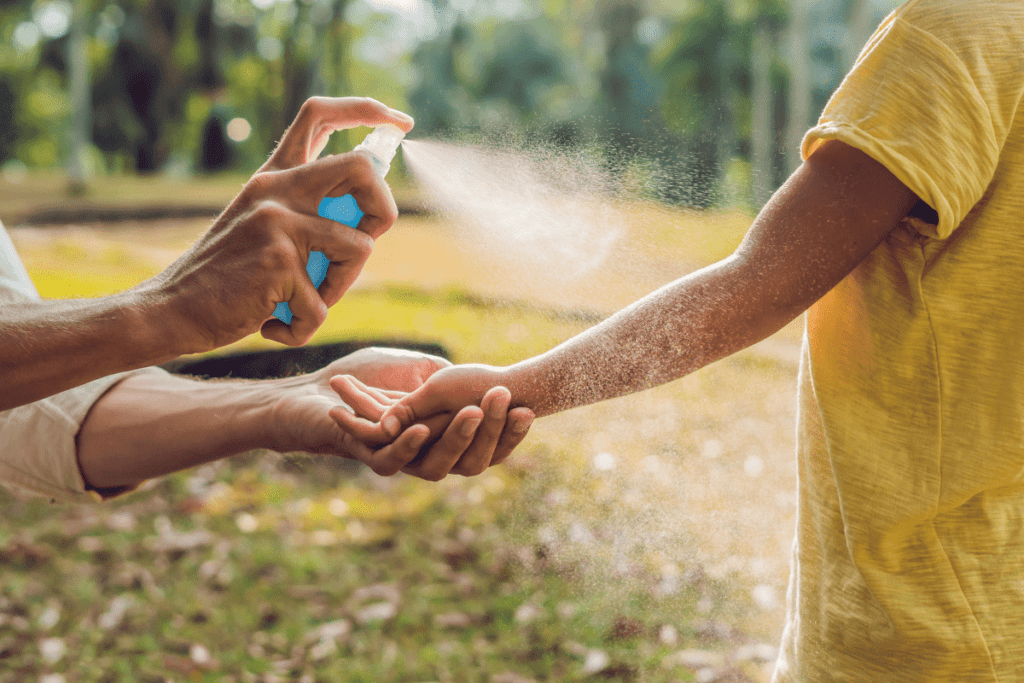With the sun beating down in the summer, it’s common to slather your skin with sunscreen to prevent burning. But, are you getting burned by toxic chemicals in your sunscreen and misleading labels instead? Just when you thought you were being safe by using sunscreen, you could be exposing yourself to nasty, hormone-disrupting chemicals.

Ingredients to avoid in sunscreen
Most brands of sunscreen contain toxic chemicals, which put you at risk when you’re making efforts to be safe. Studies have detected sunscreen chemicals in mothers’ milk, so developing fetuses and newborns may also be exposed to the chemicals we put on our skin. The worst of the bunch are oxybenzone and octinoxate, which also happen to be prevalent in many of the sunscreens found on store shelves.
Oxybenzone mimics estrogen, alters sperm production in animals, and has been associated with endometriosis. This chemical has also been banned in sunscreen in Hawaii due to its harmful effects to coral reefs. Octinoxate acts like a hormone, and, based on animal studies, causes reproductive system, thyroid, and behavioural alterations. Both chemicals are also allergens.
More moderate in the toxic department are homosalate, octisalate, and octocrylene. Homosalate disrupts estrogen, androgen and progesterone, and has toxic breakdown products. Octisalate has been shown to penetrate skin, and octocrylene is a common allergen.
Ingredients to look for in sunscreen
The healthier ingredients are titanium dioxide, zinc oxide, avobenzone (which is often stabilized with octisalate, above) and mexoryl SX. None of these have shown any evidence of hormone disruption, and only avobenzone is an allergen. Titanium dioxide and zinc oxide do present inhalation concerns, so it is best not to use these or other sun screen products, in a spray format, but they are safe and effective to use on your skin.
Sunscreen tips for consumers
- Reapply sunscreen every two hours (even if you’re using sweat/water resistant or high SPF sunscreen).
- Apply sunscreen 15 minutes before sun exposure.
- Try to limit time in the sun between 10 a.m. and 2 p.m., when rays are most intense
- Avoid oxybenzone, which can penetrate the skin, cause allergic skin reactions, and may disrupt hormones. Oxybenzone is also one of our Toxic Ten chemicals to avoid in skincare products.
- Watch out for vitamin A (in the form of retinol, retinyl palmitate, Alpha Hydroxy Acid). This anti-aging ingredient can increase your skin’s sensitivity to the sun and the possibility of a burn.
- Don’t count on other products to protect you. There might be SPF in your moisturizer or foundation, but you probably don’t use it the way you do sunscreen. In order to be effective, sunscreen needs to be reapplied throughout the day. Makeup and lip products do not offer significant sun protection.
- Don’t assume you’re safe if you don’t look like a lobster. Many sunscreens contain anti-inflammatory chemicals that reduce redness and inflammation caused by the sun. Just because you can’t see the effects of sun damage doesn’t mean they’re not there. Use adequate sun protection and reapply often no matter what.
- Shop for sunscreens with SPF between 30-50.
- Cover up by wearing loose-fitted clothing and a hat to avoid direct sunlight on your skin.
- And, did we mention you should reapply frequently? It’s the best way to help sunscreen do its job!








